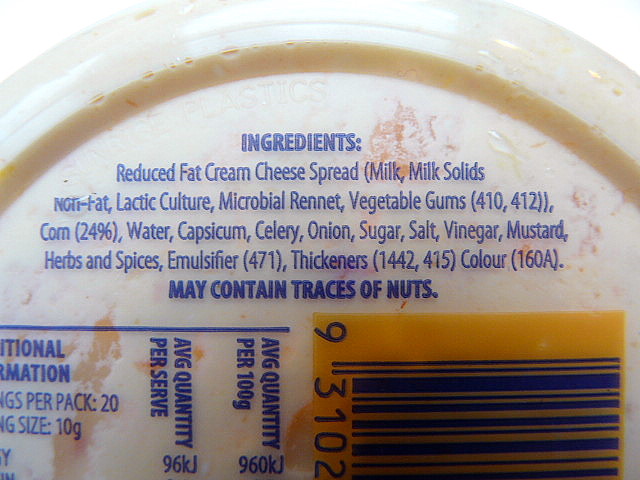How Emulsifier In Food Impacts Taste and Texture
Learn Exactly How an Emulsifier in Food Can Aid Achieve Perfectly Combined Recipes Every Single Time
Emulsifiers are necessary ingredients in the culinary globe, enabling the mixing of oil and water-based elements. Their capability to lower surface area tension permits the development of secure blends, boosting both appearance and taste in different meals. Recognizing exactly how these compounds function can change the way one approaches cooking. Several continue to be not aware of the various kinds of emulsifiers and their specific applications. Discovering this topic discloses important insights for attaining cooking excellence.
What Are Emulsifiers and Exactly How Do They Work?
Emulsifiers play an essential duty in the food market by enabling the stable mixing of active ingredients that usually do not combine, such as oil and water. These compounds have both hydrophilic (water-attracting) and hydrophobic (water-repelling) properties, allowing them to interact with both sorts of components. When an emulsifier is added to a mixture, it minimizes the surface stress in between the oil and water, promoting the development of small beads of one fluid distributed within the other. This process creates a secure emulsion, avoiding splitting up with time and boosting appearance and mouthfeel. Emulsifiers are fundamental in various foodstuff, from salad dressings to gelato, guaranteeing uniformity and top quality. They likewise add to the overall sensory experience of food, influencing taste release and visual charm. Understanding how emulsifiers function is important for food researchers and cooks alike, as they endeavor to produce balanced and satisfying culinary experiences.
Typical Kinds Of Emulsifiers Made Use Of in Cooking
Countless kinds of emulsifiers are utilized in food preparation to achieve desired structures and security in numerous food items. Common emulsifiers consist of lecithin, which is normally discovered in egg yolks and soybeans, and is extensively made use of in mayonnaise and dressings. Another prevalent emulsifier is mustard, which consists of substances that assist mix oil and water in sauces.
Additionally, commercial emulsifiers such as mono- and diglycerides are typically included in processed foods to improve their stability and boost life span. Starch-based emulsifiers, stemmed from corn or potatoes, are likewise utilized in sauces and desserts for thickening and structure. Ultimately, casein, a milk protein, serves as an emulsifying representative in milk items like cheese and cream. Each of these emulsifiers plays a necessary function in making certain that components blend effortlessly, offering the desired uniformity and flavor in cooking productions.
The Scientific research Behind Emulsification
:max_bytes(150000):strip_icc()/salad-dressings-2500-57ad12295f9b58b5c2484d0a.jpg)
The stability of a solution counts on the equilibrium in between the forces acting on the spread beads. If the droplets coalesce, the emulsion can damage, causing separation. Numerous factors, such as temperature, concentration of the emulsifier, and the approach of blending, affect the success of emulsification. Comprehending this clinical structure is vital for achieving regular cause culinary applications entailing emulsions.
Tips for Utilizing Emulsifiers in Your Dishes
When integrating emulsifiers into dishes, mindful consideration of their buildings and functionality can considerably enhance the final product. Initially, one ought to choose the proper emulsifier based upon the preferred appearance and stability of the dish. Emulsifier In Food. Common options include mustard, egg, and lecithin yolks, each offering distinct advantages
It's necessary to recognize the temperature level at which the emulsifier operates best; for example, some emulsifiers work efficiently at room temperature, while others require warmth. Progressively adding oil to the emulsifier while whisking can assist produce a steady solution.
Additionally, the proportion of emulsifier to liquid is vital; insufficient may result in splitting up, while way too much can develop an unfavorable appearance. Appropriate storage problems need to be thought about, as some emulsified products might require refrigeration to preserve security and freshness. By adhering to these tips, cooks can attain continually well-blended dishes.

Delicious Recipes Featuring Emulsifiers
While numerous cooks might not recognize it, incorporating emulsifiers right into recipes can boost dishes to new heights of flavor and texture. As an example, a timeless vinaigrette advantages substantially from the addition of mustard, which functions as an emulsifier, offering a smooth uniformity that next binds oil and vinegar seamlessly. In a similar way, homemade mayonnaise showcases the power of egg yolks, developing a creamy, elegant sauce perfect for salads and sandwiches.
In cooking, emulsifiers like lecithin can aid attain a tender crumb in muffins and cakes, enhancing wetness retention. A rich chocolate ganache, made with heavy cream and chocolate, can likewise include an emulsifier to preserve a silky coating. Additionally, gelato frequently use emulsifiers to avoid and ensure a luscious texture ice crystal development, leading to a delightful treat experience. By incorporating these emulsifying agents, chefs can create meals that thrill the taste and give a satisfying mouthfeel.
Often Asked Concerns
Are Emulsifiers Safe for Individuals With Food Allergies?
Emulsifiers can be safe for people with food allergies, depending on the details emulsifier utilized. Nevertheless, cross-reactivity and private visite site level of sensitivities differ; subsequently, consulting a healthcare expert is advisable to assure safety and security.
Can I Make My Very Own Emulsifier in your home?
Yes, people can produce homemade emulsifiers using ingredients like egg yolks, mustard, or honey. These natural options can properly mix oils and water-based parts, providing a straightforward solution for different culinary applications.
Exactly How Do Emulsifiers Affect the Nutritional Worth of Food?
Emulsifiers can enhance the nutritional worth of food by improving nutrient absorption and security. Nonetheless, excessive intake may lead to damaging effects, potentially modifying food digestion processes and impacting intestine wellness in delicate people.


Exist Any Unfavorable Side Impacts of Consuming Emulsifiers?
Some research studies suggest that eating emulsifiers might cause intestinal issues or disrupt digestive tract microbiota balance. More research study is necessary to totally comprehend their long-lasting results on health and prospective unfavorable side results.
Can Emulsifiers Change the Taste of My Recipes?
Emulsifiers can discreetly change the flavor profile of recipes. By boosting appearance and mouthfeel, they may make flavors a lot more noticable or well balanced, but they commonly do not convey strong tastes by themselves.
Emulsifiers play a necessary role in the food market by enabling the steady blending of components that typically do not integrate, such as oil and water. Numerous types of emulsifiers are utilized in cooking to accomplish wanted textures and stability in various food items. Additionally, commercial emulsifiers such as mono- and diglycerides are typically added to processed foods to enhance their stability and improve rack life. It's crucial to comprehend the temperature level at which the emulsifier operates finest; Source for circumstances, some emulsifiers function successfully at area temperature, while others require warm (Emulsifier In Food). Emulsifiers can be secure for people with food allergies, depending on the specific emulsifier used